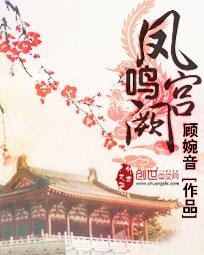注释
您可以在百度里搜索“如何成为一名优秀的产品经理(套装共18册) 艾草文学(www.321553.xyz)”查找最新章节!
注释
引言
1. 这是根据物理学家和科学哲学家伯涛夫特的观点,参见:Henri Bortoft:The Wholeness of Nature: Goethe’s Way Towards a Science of Conscious Participation in Nature. Hudson, N.Y.: Lindisfarne Press, 1996。
2. 参见1999年9月23日夏莫(C. O. Scharmer)在伦敦进行的采访“Conversation with Rupert Sheldrake: Morphic Fields”,详见:www.dialogonleadership.org。
3. 参见1999年7月14日夏莫(C. O. Scharmer)在伦敦进行的采访“Conversation with Henri Bortoft: Imagination Becomes an Organ of Perception”,详见:www.dialogonleadership.org。
4. 参见1999年7月14日夏莫(C. O. Scharmer)在伦敦进行的采访“Conversation with Henri Bortoft: Imagination Becomes an Organ of Perception”,详见:www.dialogonleadership.org。
5. 参见德赫斯,《长寿公司》(A. P. de Geus,The Living Company. Cambridge, Mass.: Harvard Business School Press,1997).
6.The New York Times,June 24 1993,1,9.
7. 参见:C. O. Scharmer, “Theory U: Leading From the Emerging Future,”Habilitation Thesis(2004),详见:www.ottoscharmer.com; C. O. Scharmer,Ästhetik als Kategorie strategischer Führung(Aesthetics as a Category of Strategic Leadership);Der ästhetische Typus von Organisationen(Stuttgart:Urachhausverlag,1991); C. O. Scharmer,Reflexive Modernisierung des Kapitalismus als Revolution von innen:Auf der Suche nach Infrastrukturen einer lernenden Gesellschaft(Reflective Modernization of Capitalism: Toward Infrastructures of a Learning Society). Stuttgart: Schäffer-Poeschel, 1996.
8. J. Jaworski,Synchronicity: The Inner Path of Leadership. San Francisco: Berrett-Koehler, 1996, p. 181.
9. J. Jaworski and C. O. Scharmer,“Leadership in the Digital Economy: Sensing and Actualizing Emerging Futures”. Cambridge, Mass.: Society for Organizational Learning and Beverly, Mass.: Generon Consulting, 2000,详见:www.dialogonleadership.org: C. O. Scharmer, W. B. Arthur, J. Day, J. Jaworski, M. Jung, I. Nonaka, and P. M. Senge, “Illuminating the Blind Spot,”2002, 详见:www.dialogonleadership.org。该篇文章的精简版刊登在Leader to Leader(Spring 2002), pp. 11-14; C. O. Scharmer,“Self-Transcending Knowledge: Sensing and Organizing Around Emerging Opportunities,”Journal of Knowledge Management,5, no.2(2000); pp. 137-150; C. O. Scharmer,“Presencing: Learning from the Future as It Emerges,”该篇论文曾经于2000年5月25~26号在芬兰赫尔辛基市赫尔辛基经济学院举办的知识与创新会议(Conference on Knowledge and Innovation, Helsinki School of Economics, Helsinki, Finland, May 25-26, 2000)上提出。详见:www. ottoscharmer.com; C. O. Scharmer, “Organizing Around Not-Yet-Embodied Knowledge,”in G.V. Krogh, I. Nonaka, and T. Nishiguchi, eds.,Knowledge Creation: A New Source of Value.New York: Macmillan, 1999, pp. 36-60; C. O. Scharmer,“Theory U: Leading From the Emerging Future”(与即将出版的新书题目相同的序言) , 2004,详见:www.ottoscharmer.com; P. Senge and C. O. Scharmer,“Community Action Research,”inHandbook of Action Research,P. Reason and H. Bradbury. Thousand Oaks, Calif.: Sage Publications, 2001, pp. 238-249; K. Käufer, C. O. Scharmer, and U. Versteegen,“Reinventing the Health Care System from Within: The Case of a Regional Physician Network in Germany,” MIT Working Paper WPC 0010. 2003, 详见:www.dialogonleadership.org; U. Versteegen, K. Käufer, and C. O. Scharmer,“The Pentagon of Praxis”inReflections: The Sol Journal,2, no. 3(2001) : pp. 36-45; K, Käufer, C. O. Scharmer, and U. Versteegen,“Breathing Life into a Dying System”inReflections: The Sol Journal,5, no. 3(2004): pp. 1-12.
10. 更多关于访谈项目的信息及本书中语录的来源,请参见:www.dialogonleadership.org及国际组织学习学会的网站:www.solonline.org。
第1章
1. J. Miles,“Global Requiem: The Apocalyptic Moment in Religion, Science, and Art”,宗教思想生活协会“交流与碰撞研讨会”15周年纪念日上的主题致辞,刊登在Cross Currents,50, no. 3(Fall 2000): pp. 294-309;详见:www.crosscurrents.org/milesrequiem.htm。
第2章
1. 该观点和本段其他观点来源于越南一行禅师(Thich Nhat Hanh)的论文,阐述“众生相即”(Interbeing)的概念,Hahn,The Heart of Understanding. Berkeley, Calif.: Parallax Press, 1988,我们在此表示感谢。
2. 有关持续生产流动和精益生产中的文化变革的案例,参见:J. Womack,The Machine That Changed the World. New York: Scribner, 1990, 以及T. Johnson and A. Broms,Profit Beyond Measure. New York: Free Press, 2000。
3. D. Bohm,Thought as a System. London: Routledge, 1994; D. Bohm,On Dialogue. London: Routledge, 1996.
4. D. Bohm and M. Edwards,Changing Consciousness: Exploring the Hidden Source of the Social, Political and Environmental Crisis Facing the World. San Francisco: Harper, 1991, p. 6.
5. M. Ray and R. Myers,Creativity in Business. New York: Doubleday/Currency, 1986.
6. 管理我们内心“判决的声音”的问题已经被广泛研究,其中一个领域是写作的创造性阶段。参见:B. Flowers, “Madman, Architect, Carpenter, Judge: Roles and the Writing Process,”Proceedings of the Conference of College Teachers of English,(Texas)44(Sept. 1979), pp. 7-10。
7. 有关零点项目的研究和理论的更多信息,参见:H. Gardner,Frames of Mind:The Theory of Multiple Intelligences. New York: Basic Books, 1993(最早出版于1983年), 及www.pz.harvard.edu。
8. 参见:“Conversation with W. Brian Arthur: Coming from Your Inner Self,” interview by J. Jaworski and C. O. Scharmer, Xerox Parc, Palo Alto, Calif., April 16, 1999, www.dialogonleadership.org。
9. W. Isaacs,Dialogue and the Art of Thinking Together. New York: Doubleday/Currency, 1999, p. 41.
10. 实际的交流总是比这类简单的举例更为复杂。培养在职场中悬挂假设的能力时,可以使用诸如“推断之梯”、情景规划和其他探索假设观念或心智模式的方法,并从中获益。例如,可参见《第五项修炼·实践篇》(P. Senge et al.,The Fifth Discipline Fieldbook. New York: Doubleday/Currency, 1994), pp. 235-293, 或同上注:Isaacs。
11. 参见:“The Cauldron,” in Senge, et al.,The FifthDiscipline Fieldbook, pp. 364-373。
12. 同上;参见:W. Isaacs,Dialogue and the Art of Thinking Together. New York: Doubleday/Currency, 1999。
13. 参见《第五项修炼·变革篇》(P. Senge, et al.,The Dance of Change. New York: Doubleday/Currency, 1999)。
14. 参见:M. Waldrop,Complexity. New York: Simon and Schuster, 1992。
第3章
1. M. Buber,I and Thou, trans. Ronald Gregor Smith. New York: Scribner Classics, 2000, pp. 23-24.
2. 瓦莱拉是法国国家科学研究中心(National Institute for Scientific Research)的研究总监。
3. 该项目在“学习经历”描述中有详细记载。参见:G. Roth and A. Kleiner,Car Launch. New York: Oxford University Press, 2000。
4. 参见《第五项修炼·实践篇》(P. Senge et al.,The Fifth Discipline Fieldbook.New York: Doubleday/Currency, 1994), pp. 84-190。
5. H. Bortoft,The Wholeness of Nature, p.264.
6. E. Schein,Organizational Culture and Leadership, 2nd ed. San Francisco: Jossey-Bass, 1992; E. Schein,The Corporate Culture Survival Guide. San Francisco: Jossey-Bass, 1999.
7. 例如,参见《第五项修炼·实践篇》 (P. Senge, et al. ,The Fifth Discipline Fieldbook, pp. 245-252)。
8. 卡巴津恩当时担任马萨诸塞大学(University of Mass.)教授和“冥想、卫生健康和社会生活中的正念禅修研究中心”(Center for Mindfulness in Meditation, Healthcare and Society)主任。他是麻省理工学院神经生物学博士,著作包括:Wherever You Go, There You Are. New York: Hyperion, 1994,以及其他许多有关正念的专业和普及作品,备受欢迎。
第4章
1. 坎贝尔引用的是哲学家叔本华(Schopenhauer)的话。
第5章
1. A. Kahane,Solving Tough Problems: An Open Way of Talking, Listening, and Creating New Realities. San Francisco: Berrett Koehler, September 2004.
第6章
1. W. B. Arthur,“Increasing Returns and the New World of Business,”Harvard Business Review(July-August, 1996), pp. 100-109.
2. J. Schumpeter,Capitalism Socialism and Democracy. New York: Harper, 1975(最早出版于1946), pp. 82-85。
3. W. B. Arthur, J. Day, J. Jaworski, M. Jung, I. Nonaka, C. O. Scharmer, and P. Senge,“Illuminating the Blind Spot ,”Leader to Leader(Spring 2002), pp. 11-14.
4. 无论是从个人角度,还是组织的角度,都有从经验中学习的大量文献。我们可以在彼得·圣吉等人编著的《第五项修炼·实践篇》(P. Senge, et al.,The Fifth Discipline Fieldbook. New York: Doubleday/Currency, 1994,pp. 59-65)中找到对标准学习周期的简单概括。其他经典的参考文献还包括全面质量管理的“戴明PDCA循环”(PDCA cycle)。参见:W. F. Deming,Out of Chaos. Cambridge, Mass.: MIT Center for Advanced Engineering Studies, 1982, p.88; D. Kolb,Experiential Learning: Experience as the Source of Learning and Development. Englewood Cliffs, N. J.: Prentice-Hall, 1984; and E.Schein,Process Consultation Revisited: Building Helping Relationships. Reading, Mass.: Addison-Wesley, 1999。
5. 参见:e.g., J. P. Kotter,Leading Change. Boston: Harvard Business School Press, 1996, 以及P. C. Nutt,Managing Planned Change. New York: Macmillan, 1992。
6. J. Jaworski,Synchronicity: The Inner Path of Leadership. San Francisco: Berrett-Koehler, 1996, pp. 176-179, pp.182-185.另参见:J. Jaworski,“Synchronicity and Servant Leadership,”inFocus on Leadership: Servant-Leadership for the 21st Century, L. C. Spears and M. Lawrence, eds. New York: John Wiley and Sons, 2002, pp. 287-294; 以及J. Jaworski, “Destiny and the Leader,”inInsights on Leadership: Service, Stewardship, Spirit and Servant-Leadership, L. C. Spears, ed. New York: John Wiley and Sons, 1998, pp. 258-287.
7. 参见:C. O. Scharmer, “Presencing: Learning from the Future as It Emerges”,该论文在2000年5月25~26日于芬兰赫尔辛基经济学院(Helsinki School of Economics)举办的“知识与创新会议”(Conference on Knowledge and Innovation, May 25-26, 2000, Helsinki School of Economics, Helsinki, Finland)上提出。详见:www.ottoscharmer.com. C. O. Scharmer,“Self-Transcending Knowledge: Sensing and Organizing Around Emerging Opportunities,”Journal of Knowledge Management,5, no. 2(2001): 137-150. C. O. Scharmer, W. B. Arthur, J. Day, J. Jaworski, M. Jung, I. Nonaka, and P. Senge,“Illuminating the Blind Spot: Leadership in the Context of Emerging Worlds”,这是对一个正在进行的研究项目的介绍,详见:www.dialogonleadership.org。另参见夏莫U型理论一书中的全面介绍,Theory U: Leading from the Emerging Future(www.ottoscharmer.com)。另参见夏莫关于U型理论基本原则的早期著作:Reflexive Modernisierung des Kapitalismus als Revolution von innen. Auf der Suche nach Infrastrukturen einer lernenden Gesellschaft(Reflective Modernization of Capitalism: Toward Infrastructures of a Learning Society). Stuttgart: Schäffer-Poeschel, 1996。另参见欧洲同事Friedrich Glasl的著作,他提出一个不同但又相关的U形过程:F. Glasl,The Enterprise of the Future. Stroud, U. K.: Hawthorn Press, 1997,pp.67-71; 以及F. Glas,Confronting Conflict. Stroud, U. K.: Hawthorn Press, 1999, pp. 154-156。
U型理论的提出是基于对三个不同方法论的综合:现象学(精确的观察),东西方的冥想演练方法(本原觉知)和快速循环的革新及创造(快速形成原型,建立鲜活样板)。这种综合方法的灵感来源是多种多样的,但是对夏莫和Glasl来说最重要的灵感来源可能是奥地利哲学家Rudolph Steiner(1861—1925)的著作。他将歌德的科学方法与他自己的精神科学“人智学”(Anthroposophy)相结合。参见:R. Steiner,The Philosophy of Freedom. London: Rudolf Steiner Press, 1988。
8. 行为学家把这叫作“认知偏差”(cognitive bias)和对过去经验的“固着”(anchoring)。参见:e.g., D. Kahnemand, P. Slovic, and A. Tversky,Judgement under Uncertainty: Heuristics and Biases. Cambridge, U. K.: Cambridge University Press, 1982。
9. 著名的组织理论学家卡尔·维克(Karl Weick)在对Mangulch森林消防队的死亡分析中举出一个强有力的事例:在火势出现突然逆转的时候,他们无法“放弃他们的工具”,然后逃离火场。参见:K. Weick, “Prepare Your Organization to Fight Fires,”Harvard Business Review(May-June 1996), pp. 143-148. Henry Mintzberg在他的紧急情况的有效策略的分析中也提出了类似的观点,参见:H. Mintzberg,“Crafting Strategy,”Harvard Business Review(July-August 1987), pp. 66-75。
10. Annie Besant翻译的《薄伽梵歌》(The Bhagavad-Gita),或“The Lord’s Song”,The Bible of the World. New York: Viking, 1939,由R. Ballon出版社重新出版。
第7章
1. Matthew 19: 24.
2. Eleanor Rosch,“Spit Straight Up-Learn Something! Can Tibetan Buddhism Inform the Cognitive Sciences?,”inMeeting at the Roots: Essays on Tibetan Buddhism and the Natural Sciences, B. A. Wallace, ed. Berkeley, Calif.: University of California Press。
3. Eleanor Rosch,“Spit Straight Up-Learn Something! Can Tibetan Buddhism Inform the Cognitive Sciences?,”inMeeting at the Roots: Essays on Tibetan Buddhism and the Natural Sciences, B. A. Wallace, ed. Berkeley, Calif.: University of California Press。
4. “Conversation with Eleanor Rosch: Primary Knowing: When Perception Happens from the Whole Field,”interview by C. O. Scharmer, University of California, Berkeley, Department of Psychology, October 15, 1999,详见:www.dialogonleadership.org。
5. 西田几多郎是近代第一位将东方传统智慧和西方哲学思想深度结合的日本思想家。参见:K. Nishida,An Inquiry into the Good, trans. M. Abe and C. Ives. New Haven, Conn.: Yale University Press, 1990。
6. “Conversation with Eleanor Rosch: Primary Knowing: When Perception Happens from the Whole Field,” interview by C. O. Scharmer, University of California, Berkely, Department of Psychology, October 15, 1999,详见:www.dialogonleadership.org。
第9章
1. 全部内容详见:www.solonline.org。
2. 玛丽亚·冯·特普拉是奥地利海军上校巴隆·冯·特普拉与他第一任妻子的女儿之一。在第一任妻子去世之后,父亲最终与孩子们之前的临时保姆再婚,她的名字也叫玛丽亚。巴隆·冯·特普拉的第二任妻子玛丽亚,是《音乐之声》一剧的女主角。
3. 在斯特朗夫妇(Maurice, Hannah Strong)和其他几位同事的帮助下,米尔顿建立了圣地托拉斯(Sacred Land Trust)。到目前为止,已成功地保留了大约360英亩土地,从而使这片土地在以后的任何开发中都能得到保护。
第10章
1. G. B. Shaw, “Dedicatory Epistle,”Man and Superman. New York: Penguin, 1950.
2. 参见:R. Fritz,The Path of Least Resistance. New York: Ballantine Books, 1989, 以及R. Fritz,Your Life as Art. Newfane, Vt: Newfane Press, 2002。
3. Fritz的“结构性张力”一词在《第五项修炼》中被称作“创造性张力”(参见:e.g., P. Senge,The Fifth Discipline)。
4. 《道德经》第29章和第48章(Lao Tzu, Tao T. Ching, Gia-Fu Feng)和Jane的英文译本(New York: Vintage Books, 1972, Chapters 29, 48)。
5. M. Buber,I and Thou, p. 59.
第11章
1. R. Bache,Dark Night, Early Dawn. Albany: State University of New York Press, 2000, pp. 188-189.
2. 参见:“Conversation with John Kao, Interview by C. O. Scharmer”inReflections: The SoL Journal,2, no. 4, 10-20; 另参见www.dialogonleader ship.org。
3. 参见:R. Fritz,Your Life as Art. Newfane, Vt: Newfane Press, 2002。
4. 众所周知的事例包括世界可持续发展工商委员会(World Business Council for Sustainable Development,www.wbcsd.org), CERES(www.ceres.org)和联合国全球契约组织(the United Nations Global Compact,www.unglobalcompact.org)。
5. 雷克斯案例的详情,参见:M. Hotchkiss, C. Kelley, R. Ott, and J. Elton,“The Lakes Story,”Reflections: The SoL Journal, 1, no. 4(2000), 24-31。
6. J. Jaworski,Synchronicity, p. 88.
7. W. H. Murray,The Scottish Himalayan Expedition. London: J. M. Dent and Sons, 1951.
8. R. Bache,Dark Night, Early Dawn, pp. 189-196.
9. R. Bache,Dark Night, Early Dawn, p. 183。
10. R. Bache,Dark Night, Early Dawn, p. 185。
11. R. Bache,Dark Night, Early Dawn, p. 183。
第12章
1. 参见:P. Mirvis, K. Ayas, G. Roth,To the Desert and Back: The Story of the Most Dramatic Business Transformation on Record. New York: Jossey-Bass, 2003。
2. Dee Hock,Birth of the Chaordic Age. San Francisco: Barrett-Kohler, 1999, pp. 124-125.
3. Dee Hock,Birth of the Chaordic Age. San Francisco: Barrett-Kohler, 1999, pp. 134-135。
4. Dee Hock,Birth of the Chaordic Age. San Francisco: Barrett-Kohler, 1999, pp. 134-135。
5. Dee Hock,Birth of the Chaordic Age. San Francisco: Barrett-Kohler, 1999, p. 140。基本原则是:所有参加者具有平等的所有权;参加者享有平等的权利和义务;对所有符合资格的潜在参加者公开;最大限度地分散权力、职责和资源;在每个管理机构中,实现职权的公平分配;新的理念或组织不得以任何形式轻视已有的参加者;最大限度地遵循自愿原则(例如退出协会和共有财产的使用);应当引导而不应当强制推行变革;应当有无限的可塑性,但同时又有持久性。
6. “Democratic Vistas,”The Portable Walt Whitman, M. van Doren, ed. New York: Penguin Books, 1979, p. 348.
第13章
1. 参见:D. Chatterjee,Leading Consciously. Massachusetts: Butterworth-Heinemann, 1998, 以及Light the Fire in Your Heart. New Delhi: Full Circle, 2002。
2. 参见南怀瑾《原本大学微言》.ALight Talk on the Original“Great Learning”, 老古文化出版社,Lao Ku Culture Foundation, 1998。
3. 关于西方人对佛教自我观的阐述,参见:M. Epstein,Thought Without a Thinker: Psychotherapy from a Buddhist Perspective. New York: Basic Books, 1995。
第14章
1. Jakob von Uexküll曾做过类似的观察,他断言我们的行为(Wirkwelt)向全球范围扩展的影响不再是与一个相似的感知(merkwelt)扩展相关联,也不再是对感知扩展的反馈。参见:J. Uexküll and G. Kriszat,Streifzüge durch die Umwelten von Tieren und Menschen. Frankfurt Main: Fischer Verlag, 1970。
2. D. Peat,Infinite Potential: The Life and Times of David Bohm. Reading, Mass.: Addison-Wesley, 1999, p. 1.
3. 参见:J. Jaworski与Bohm的私下会谈,Synchcronicity. San Francisco: Berrett-Koehler, 1996, pp. 79-89,以及London, July 28, 1980版。
4. 参见:e.g., G. Cajete,Native Science: Natural Laws of Interdependence. Santa Fe, N. M.: Clear Light Publishers, 1999。
5. D. Bohm and M. Edwards,Changing Consciousness: Exploring the Hidden Source of the Social, Political and Environmental Crisis Facing the World. San Francisco: Harper, 1991, p. 6.
6. D. Bohm and M. Edwards,Changing Consciousness: Exploring the Hidden Source of the Social, Political and Environmental Crisis Facing the World. San Francisco: Harper, 1991, p. 6.
7. 例如,系统家庭疗法(systems family therapy)就是由此产生的,它认为最深刻的洞察力和杠杆作用在于理解更广泛的人际关系模式。换言之,如果你想帮助身陷困境的青少年,就需要了解他们和父母之间的关系,以此作为家庭系统的基本元素。参见:D. Kantor and W. Lehr,In the Family. San Francisco: Jossey-Bass, 1975。
8. 参见:e.g., D. Ancona,“Bridging the Boundary: External Activity and Performance in Organizational Teams,”Administrative Science Quarterly(1992, 37) , pp. 634-664。
9. H. T. Johnson and A. Broms,Profit beyond Measure. New York: The Free Press, 2000, p. 45. 另见H. T. Johnson,“Reflections of a Recovering Cost Accountant,”SoL Research Forum, January, 1998, www.solonline.org。
10. Johnson and Broms,Profit Beyond Measure, pp. 103-110.
11. F. Capra,The Hidden Connections. Integrating the Biological, Cognitive, and Social Dimensions of Life into a Science of Sustainability. New York: Doubleday, 2002, pp. xvi-xvii; 另见F. Capra,The Turning Point. New York: Bantam Books, 1982。
12. J. S. Bell,“On the Problem of Hidden Variables in Quantum Mechanics,”Review of Modern Physics, 38(1966): 447-452; J. T. Cushing and E. McMullin,Philosophical Consequences of Quantum Theory: Reflections on Bell’s Theorem. Notre Dame, Ind.: Notre Dame Prsess, 1989.
13. D. Radin,The Conscious Universe. San Francisco: Harper, 1997, p.278.
14. D. Bohm,Wholeness and the Implicate Order. London: Ark Paperbacks, 1984, p. 129.
15. R. D. Nelson, D. I. Radin, R. Shoup, P. Bancel, “Correlation of Continuous Random Data with Major World Events,”p. 10, http://noosphere.princeto.edu. 另见R. D. Nelson, D. I. Radin, R. Shoup, P. Bancel,“Correlation of Continuous Random Data with Major World Events,”Foundations of Physics Letters,15, no. 6(2000): 537-550; D. I. Radin,“For Whom the Bell Tolls: A Question of Global Consciousness,”Noetic Sciences Review, 63(2003): 8-13, 44-45; D. I. Radin,“Exploring Relationships Between Random Physical Events and Mass Human Attention: Asking for Whom the Bell Tolls,”Journal of Scientific Exploration, 16, no. 4(2002): 553-548. 在“9·11”事件中该观测站网络的可能性概率的总结: 实测的网络方差0.003, 实测自身相关系数0.001,实测节间相关系数0.000 2。详情可直接咨询普林斯顿大学机械工程学院的R. D. Nelson。
16. 参见:Jaworski,Synchronicity, pp. 79-80, 177-180; 另见L. McTaggart,The Field: The Quest for the Secret Force of the Universe. New York: HarperCollins, 2002。
17. H. Maturana and F. Varela,The Tree of Knowledge. Boston, Mass.: Shambala Press, 1987.
18. H. Maturana and F. Varela,The Tree of Knowledge. Boston, Mass.: Shambala Press, 1987.
19. Capra,The Hidden Connections, p. 261.
20. 与David Bohm的私人谈话(London, July 28, 1980)。
21. A. Zajonc,Catching the Light: The Entwined History of Light and Mind. New York: Bantam Books, 1993.
22. “Investigating the Space of the Invisible: Conversation with Arthur Zajonc,” interview with C. O. Scharmer, Amherst, MA, October, 2003. www.dialogonleadership.org。另见A. Zajonc,Goethe and the Science of His Time: An HistoricalIntroduction, inGoethe’s Way of Science: A Phenomenology of Nature, D. Seamon and A. Zajonc, eds. New York: State University of New York Press, 1988, pp. 15-30。
23. Goethe, 1823, 引自A. Zajonc,Goethe and the Science of His Time: An Historical Introduction,inGoethe’s Way of Science: A Phenomenology of Nature, D. Seamon and A. Zajonc, eds. New York: State University of New York Press, 1988, pp. 27。
24. 美国国家科学基金会(NSF)为规划程序筹集资金,标志着这两种认识论开始出现汇合,NSF也是该中心的一个潜在的资助者。
25. 萨特布隆认为“本土科学”(native science)的概念在主流科学家中存有争议。在私人信函中,她曾将其定义为“世界各地人民收集、发展和拥有的集体知识”。这是从史前开始,当地居民世代口口相传的知识。直到最近,这种知识由于其“原始性”而被人们丢弃。然而事实上,它不断地证明了其本身的精密性与复杂性。随着我们对当前环境危机的严重性不断加深认识,在许多领域里,科学家们正在搜寻和重视这种本土化的知识/科学。
26. 引自《第五项修炼》(P. Senge,The Fifth Discipline),p.170,“(人类)对自己、对自己的思想和感觉的体验,好像是与其余的世界相分离的——这其实是我们意识中的一种光学幻象。这种幻象错觉对我们来说就是一种囚禁,它把我们局限在个人的欲望里,并把我们的感情局限在最近的几个人身上。我们的任务就是把自己从这个囚禁中解放出来,而方法就是通过扩展我们的慈悲心的范围,使之包容所有的生命,包容整个大自然,及其内在之美。”
27. 参见:Humberto Maturana,“Metadesign,”www.inteco.cl/articulos/ metadesign_parte3.htm。
28. 参见《第五项修炼》(P. Senge,The Fifth Discipline)或《第五项修炼·实践篇》(P. Senge, et al.,The Fifth Discipline Fieldbook),pp. 135-140。
第15章
1. I. Nonaka and H. Takeuchi,The Knowledge-Creating Company: How Japanese Companies Create the Dynamics of Innovation. Oxford: Oxford University Press, 1995.
2. T. Berry,The Dream of the Earth. San Francisco Sierra Club Books, 1988, p. 123.
3. R. Greenleaf,The Servant Leader Within: A Transformative Path. Mahwah, N. J.: Paulist Press, 2003.
4. M. Buber,I and Thou, trans. Ronald Gregor Smith. New York: Scribner, 1958.
5. 这个理论是大乘佛教(Mahayana Buddhism)的重点,这个佛教学派来源于印度,在中国、北亚和日本都特别有影响。例如,参见《大乘起信论》[The Awakening of Faith(attributed to Asvaghosha) trans. with commentary by Y. S. Hakeda. New York: Columbia University Press, 1967]。
6. 本访谈The Blind Spot: Hitler’s Secretary可以通过www.amazon.com网站获取带有英语、法语和西班牙语字幕的DVD。
尾声
1. D. Quinn,Ishmael. New York: Bantam/Turner Books, 1992.
2. D. Quinn,Ishmael. New York: Bantam/Turner Books, 1992,p. 56。 如何成为一名优秀的产品经理(套装共18册)




